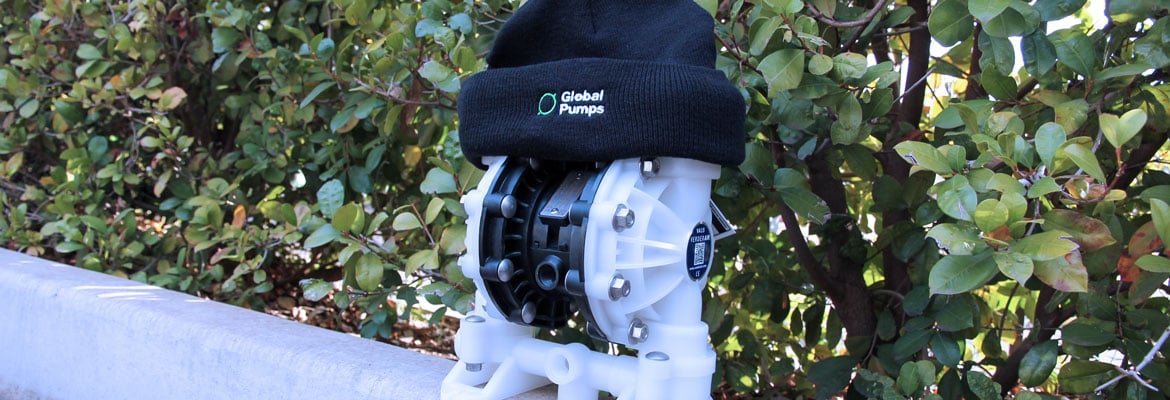Air-operated diaphragm pumps are known in the industry to be low maintenance and an easy to operate pump option. However, experienced pump operators understand the importance of getting clean and dry air into their pumps to avoid a common problem: freezing. Built up ice can block your pumps exhaust system which results in slowing or even stopping production, thus increasing downtime.

Before trying to fix an icing problem, you must look for some of the following indicators:
- The pump has unpredictable pressure fluctuations
- The air motor stops and sporadically restarts
- The ice will melt over an extended period, resulting in the pump restarting
- The motor or muffler is heavily frosted
- The compressed air being used is moisture laden due to lack of drying equipment
If these conditions exist, you will need to do fluid and air control adjustments to maintain a constant cycle rate.
What causes freezing in AODD pumps?
Low temperatures that run through air operated diaphragm pumps typically are a result of using the pump at high discharge pressures. Ice forms in the pumps when the compressed air impacts a cold surface, e.g., a bend in the pipe which results in freezing and build-up.
To mitigate freezing, you can install a dryer on the pumps compressor that only runs clean and dry air through the pump. Removing the muffler and seal usually eliminates ice completely, however, increases noise and often deems impractical for most users.
The type of fluid being pumped can contribute to your air operated diaphragm pump freezing. Fluids with higher viscosities, such as grease and syrups, will cause the pump to work harder and contribute to ice build up due to the pump approaching maximum capacity. Maximum capacity causes the temperature to significantly decrease at the motor which results in freezing.
There are several other causes of freezing. The air supply may be too high for the application resulting in excess air being released through the exhaust system, long cycles, high humidity, and cooler weather are also contributing factors.
Solutions for preventing pump freezing:
To eliminate freezing, we have highlighted some solutions to help improve your pumps performance.
- Change the muffler material or fit a rubber extension hose to reduce conductivity and increase overall surface area
- Remove moisture from the air supply by adding a dryer to the compressor system
- Run the pump at a lower speed to reduce air pressure
- Check and clean the muffler to eliminate contamination factors
- Install a straight exhaust pipe + path to minimise opportunities for ice to form in the bends
- Have a single exhaust with a single exit port. This allows for the cold air to exit directly into the muffler with minimal contact on other surfaces
These solutions are recommended by our pump experts at Global Pumps, and are designed to be straight forward and simple, to ensure you are not increasing downtime and decreasing productivity. Although AODD pumps freezing can be highly dependant on the application and environmental conditions, reducing the pumps air pressure is a guaranteed effective way to reduce icing.
For more information, get in touch with Global Pumps today. Our experts will be able to provide an effective and cost-efficient solution application, and are committed to solving your tough challenge.

